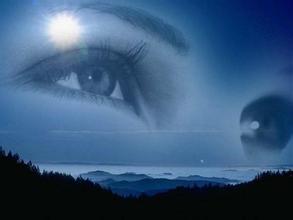Kenyan Coffee Flavor with different Taste introduction to Fine Coffee in Manor area
Kenya is one of the cradles of mankind, and human skull fossils about 2.5 million years ago have been unearthed in Kenya.
In the 7th century AD, some commercial cities were formed along the southeast coast, and Arabs began to do business and settle here. Zheng He, a Chinese navigator, visited Malindi and Mombasa in Kenya.
In 1498, Vasco da Garda, a Portugal, visited Kenya.
In the sixteenth century, Portugal colonists occupied the coastal zone. In 1557, Portugal built a fort in Mombasa, East Africa.
In 1890, Britain and Germany divided East Africa, Ken was assigned to Britain, the British government declared Ken as its "East Africa Protectorate" in 1895, and changed to a colony in 1920.
In March 1960, the Kenya African National Union (KANU) and the Kenya African Democratic Union were established.
In February 1962, the London Constituent Assembly decided to form a coalition government between the Kenya African National Union (KANU) and the Kenya African Democratic Union.
In May 1963, a general election was held and the Kenyan League won. An autonomous government was established on June 1 of the same year, and independence was declared on December 12.
The Republic of Kenya was founded on December 12, 1964, and remained within the Commonwealth, with Jomo Kenyatta as its first president.
Kenyatta died in 1978 and was succeeded by Vice President Daniel Arap Moi.
The third multiparty election was held in December 2002, and the opposition National Rainbow Alliance won. Mwai Kibaki was sworn in as President on December 30, 2002. [3]
On October 28, 2015, he was elected to the United Nations Human Rights Council for a term of office from 2016 to 2018. the Great Rift Valley
The east branch cuts the plateau vertically from north to south, dividing the plateau into east and west parts. The valley floor of the Great Rift Valley is 450-1000 meters below the plateau and 50-100 kilometers wide. There are lakes of varying depths and many volcanoes. The northern part is desert and semi-desert zone, accounting for about 56% of the total area of the country. Mount Kenya in the central highlands is 5199 meters above sea level, the highest peak and the second highest peak in Africa, with snow on its summit all year round. Wagagai extinct volcano 4321 meters above sea level
Kenya coffee is mostly grown at altitudes of 1500- 2100 meters and harvested twice a year. To make sure only ripe berries are picked, people have to make about seven rounds through the woods. Kenyan coffee is grown by smallholders who harvest the coffee and send it fresh to a cooperative washing station, which sends the washed and dried coffee to the cooperative in the state of "parchment beans"(i.e. beans covered with an endocarp)("parchment beans" are the final state of the beans before peeling). All the coffee is collected together and the grower charges an average price based on its actual quality. The system has generally worked well and is fair to growers and consumers-although some buyers, notably japanese businessmen, have complained about kenya's coffee system. Some traders say the quality of coffee in the country has declined, pointing out that buying directly from farmers may be one way to improve quality. However, kenya's detailed regulations and procedures are a model for all coffee-producing countries-aromatic, rich, fruity, rich and perfect. Kenya coffee has a wonderful fruity flavor, with a blackberry and grapefruit flavor, and is a favorite of many coffee lovers. This coffee has an excellent medium purity, crisp and refreshing taste. Fresh flavor and best for iced coffee in summer. When tasting this coffee, if it is accompanied by fruit with acidity such as grapefruit, it will definitely give me the best coffee experience. "Less coffee, more fruit tea" is the common feeling many people have about this light roasted Kenyan coffee. In addition to the obvious and fascinating fruit acidity, Kenya coffee is mostly grown by small coffee farmers in a variety of different environments, with different climates and rainfall each year, bringing a variety of distinct and unique personalities.
1. Coffee contains certain nutrients. Nicotinic acid in coffee contains vitamin B, which is higher in roasted beans. And there are free fatty acids, caffeine, tannic acid and so on.
2. Coffee is good for the skin. Coffee can promote metabolic function, activate digestive organs, constipation has a great effect. Bathing with coffee powder is a kind of thermotherapy, which has the effect of losing weight.
3. Coffee has a hangover effect. Drinking coffee after drinking will quickly oxidize acetaldehyde converted from alcohol and decompose it into water and carbon dioxide and expel it from the body.
4. Coffee can eliminate fatigue. To eliminate fatigue, it is necessary to supplement nutrition, rest and sleep, and promote metabolic functions, and coffee has these functions.
5. Three cups of coffee a day can prevent gallstones. For caffeinated coffee, which stimulates gallbladder contraction and reduces cholesterol in bile, Harvard University researchers found that men who drink two to three cups of coffee a day have a 40 percent lower chance of developing gallstones.
6. Drinking coffee regularly can prevent radiation damage. Radiation damage, especially electrical radiation has become a more prominent pollution. Indian atomic researchers reached this conclusion in mouse experiments and said it could be applied to humans.
7. Coffee's health benefits. Coffee has the functions of antioxidation and heart protection, strengthening muscles and bones, benefiting waist and knees, stimulating appetite, eliminating fat, eliminating accumulation, removing dampness from orifices, activating blood circulation and removing blood stasis, stopping wind and stopping spasm, etc.
8. The emotional impact of coffee. Experiments have shown that the average person who absorbs 300 mg of caffeine a day (about 3 cups of brewed coffee) has a good effect on a person's alertness and mood

Important Notice :
前街咖啡 FrontStreet Coffee has moved to new addredd:
FrontStreet Coffee Address: 315,Donghua East Road,GuangZhou
Tel:020 38364473
- Prev

Introduction to the characteristics of Ethiopian Bancimagi Coffee Flavor Manor
In February 1977, Lieutenant Colonel Mengistu Haier Maryam (MENGISTU HAILE MARIAM) launched a military coup and served as Chairman of the interim military Administrative Council and head of State. In 1979, the Ethiopian Labor people's Party Organization Committee, dominated by soldiers, was established to implement an one-party system. In 1984, the Ethiopian Workers' Party was formed according to the Soviet Communist Party model. Mengistu, September 1987
- Next

Rich flavor of Colombian coffee taste introduction to the characteristics of fine coffee in the manor area
In 1501, the Spaniard R.de Bastidas first reached the northern coast of Colombia and founded the city of Santa Marta in 1525. In 1533, P.de Eredia established Cartagena. In 1535, G. Simone de Xada led the Spanish colonial army into the interior of Colombia, conquered the Chibucha, established the city of Bogota, and Colombia became a Spanish colony. At the beginning
Related
- Detailed explanation of Jadeite planting Land in Panamanian Jadeite Manor introduction to the grading system of Jadeite competitive bidding, Red bid, Green bid and Rose Summer
- Story of Coffee planting in Brenka region of Costa Rica Stonehenge Manor anaerobic heavy honey treatment of flavor mouth
- What's on the barrel of Blue Mountain Coffee beans?
- Can American coffee also pull flowers? How to use hot American style to pull out a good-looking pattern?
- Can you make a cold extract with coffee beans? What is the right proportion for cold-extracted coffee formula?
- Indonesian PWN Gold Mandrine Coffee Origin Features Flavor How to Chong? Mandolin coffee is American.
- A brief introduction to the flavor characteristics of Brazilian yellow bourbon coffee beans
- What is the effect of different water quality on the flavor of cold-extracted coffee? What kind of water is best for brewing coffee?
- Why do you think of Rose Summer whenever you mention Panamanian coffee?
- Introduction to the characteristics of authentic blue mountain coffee bean producing areas? What is the CIB Coffee Authority in Jamaica?

